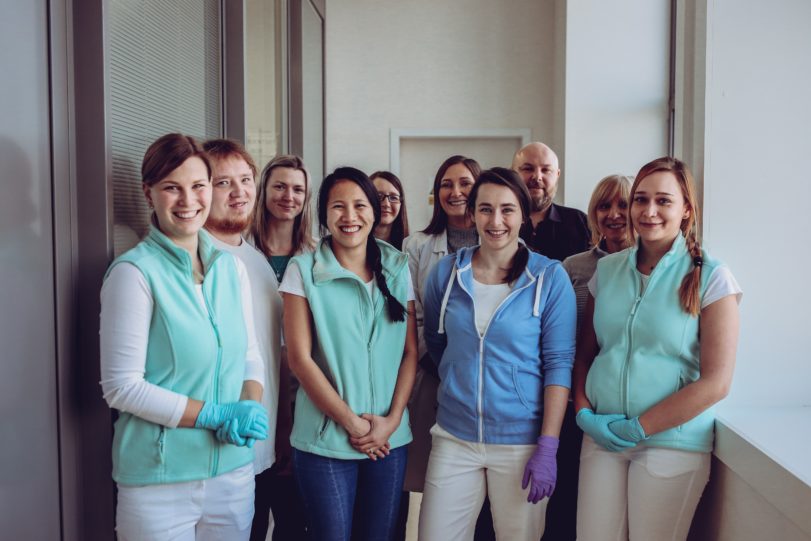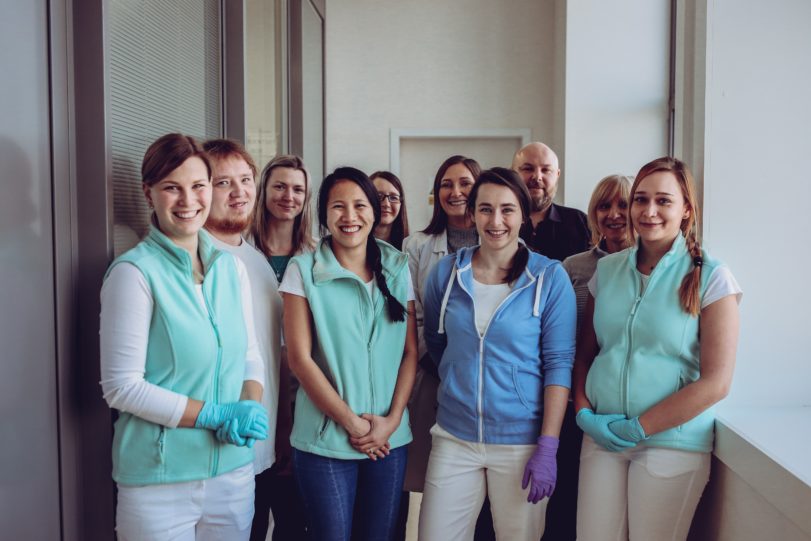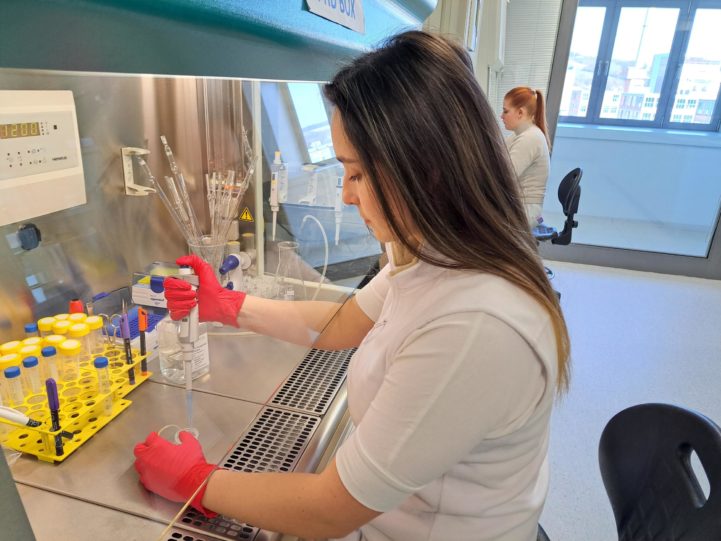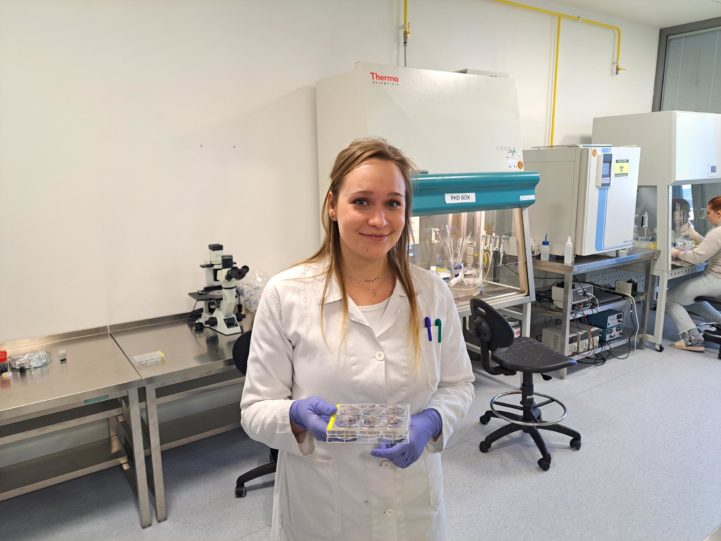
COMPOSITE MATERIALS – A NEW WAY TO MULTIFUNCTIONAL SYSTEMS FOR TISSUE ENGINEERING
14. March 2023Zlín, 10 March 2023 – Ever since man became aware of the imperfection of the human body during the regeneration of damaged tissues, scientists have been trying to find a way to compensate for this deficiency. Therefore, in addition to conventional treatment, the options of using synthetic constructs with biomimetic properties which can replace damaged tissue is being developed.
The concept of biomimetics, i.e. inspiration by nature and by living systems and use of a technical solution developed by man to imitate the living systems, is promising for the development of materials which have unique properties. A key role is played by cooperation among scientists from various fields, especially material engineers and cell biologists. Such was the composition of the project team funded by the Czech Science Foundation (GACR), which was focused on research and detailed knowledge of the relations between biomaterials and stem cells.
Cells perceive a large number of external stimuli. The coordination and combination of these stimuli, together with the internal environment of the cell, determines the cell’s behaviour. The interaction between biomacromolecules forming the environment in tissues and cells was established during the long evolutionary development of organisms and can, therefore, be considered the gold standard. “Therefore, there is a logical option of creating the coordination required by using the same biomacromolecules during the preparation of man-made tissue carriers. But practice shows that, currently, this is a technologically unachievable holy grail. However, a suitable approach can lead to the creation of composite systems that combine natural biomacromolecules (bringing in compatibility with the living system and some of the bioactive properties) with synthetic materials (bringing in bioactivity, responsiveness to external stimuli and technological processability) and, thus, can get as close as possible to this grail,” says team leader Professor Petr Humpolíček.
A contribution towards finding a solution for this challenge was also provided by a project funded by the Czech Science Foundation and implemented by a research team composed of members from Tomas Bata University in Zlín and Masaryk University in Brno. The team managed to successfully connect biopolymers (e.g. sodium hyaluronate) with synthetic conductive polymers (polyaniline, polypyrrole) by means of preparation of composite colloidal particles. “The particles prepared were not only miscible with other matrix biopolymers during the creation of functional tissue carriers, but also showed antibacterial properties as an added value. However, the crucial fact was their compatibility with human induced pluripotent cells, considered as key models for biomedical applications,” explains Assoc. Prof. Věra Kašpárková, a member of the research team. A paper describing this system was published in the prestigious journal Carbohydrate Polymers in 2021, also thanks to the fact that its results demonstrated the ability of induced pluripotent cells to create pulsating heart cells on the materials described. Here, the typical property of composite systems containing electrically conductive polymers, i.e. conductivity, was benefitted from, because the potential application of such materials is primarily focused on the development of tissues sensitive to electrical stimuli, such as heart or nerve tissues.
In the course of the experiments conducted, the team came across an interesting effect, which is crucial when considering the practical applications of one of the conductive polymers, polypyrrole. Polypyrrole is derived from the monomer of pyrrole, which is known to be part of a number of pharmacologically active substances. It is a polymer with very promising end-use properties, e.g. good electrical conductivity in a physiological environment or a high degree of biocompatibility. The team demonstrated that the preparation of this polymer generates by-products that can support neurogenesis in stem cells. It is, therefore, necessary either to take this effect into account when preparing composite materials containing polypyrrole, or it is required to ensure a high degree of purity if neurogenesis is undesirable for the given application.
Another critical property defining the biological value of a material is the morphology and structuring of its surface, which influence and control the behaviour of cells on the material in question. Therefore, the team developed a procedure for the preparation of targeted structured surfaces based on commonly used tissue plastics. It is a reproducible and controllable procedure leading to the creation of variable biomimetic structures, which can subsequently be modified, e.g. by means of plasma, by depositing a conductive polymer film or by chemical treatment using suitable functional groups. With funding provided by the project, the researchers managed not only to prepare structured surfaces, but also to prove their cellular compatibility with stem cells. “An interesting effect observed on one type of surface was its ability to increase the intensity of the fluorescent signal, e.g. when measuring the response of heart cells. The structured surface, based on conventional tissue culture plastics, which amplify fluorescent signals, can find interesting application in practical studies that require sensitive measurement of cellular behaviour,” says Dr. Pacherník, a co-investigator of the project, who has observed this effect.
Thus, the presented research funded by the Czech Science Foundation has an impact not only in the field of basic research, but can also contribute to the development of laboratory methods used for the implementation of studies where the response of cells to a given stimulus is low and hardly detectable when using conventional procedures applied at present.
“It is a three-year project. The Czech Science Foundation has assessed it as excellent for the outstanding results which the scientists have achieved so far,” said Petra Svěráková, Press Officer of Tomas Bata University in Zlín.
Prof. Ing. Petr Humpolíček, Ph.D., is the Head of the “Biomaterials” research team at the Centre of Polymer Systems at Tomas Bata University in Zlín. The team focuses on research and development of biomaterials, in particular on the determination of their interactions with eukaryotic organisms. It specializes in electrically conductive polymers, colloidal systems and smart composite materials. His team cooperates with a number of prestigious institutions abroad, not only when dealing with specific problems, but also by organizing of long-term student internships.



Contact:
Mgr. Petra Svěráková
Press Officer
Tomas Bata University in Zlín
sverakova@utb.cz
Tel: 777 852440